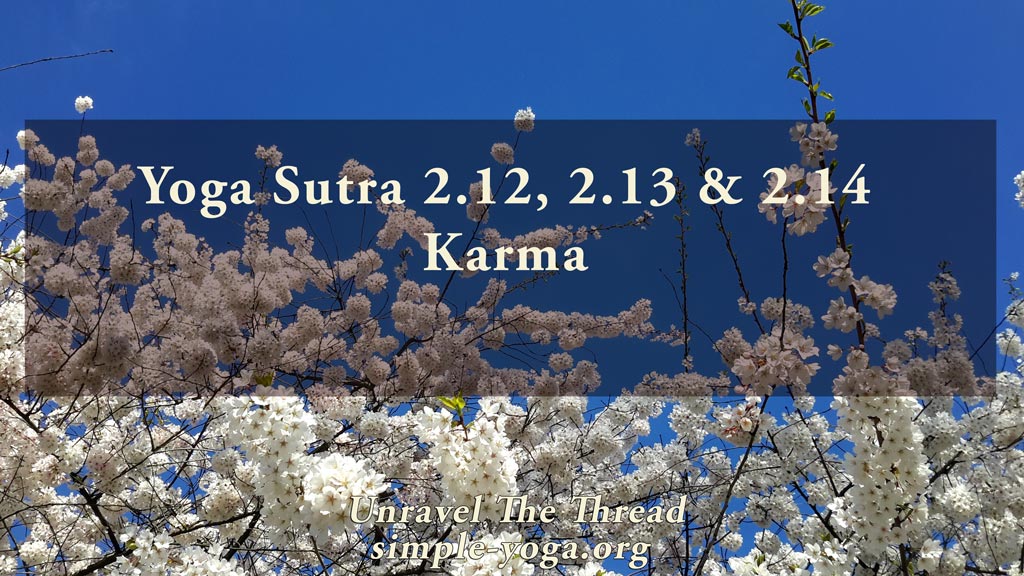
2.10 Dissolving subtle afflictions
May 11, 2020
2.12 2.13 & 2.14 Karma
May 24, 2020
2.10 Dissolving subtle afflictions
May 11, 2020
2.12 2.13 & 2.14 Karma
May 24, 20202.11 Meditation counteracts active afflictions

2.11 When the afflictions manifest as ways of being (vrttis), they are counteracted through meditation.
After learning about ways to deactivate the subtle forms of affliction, this verse indicates that meditation is the tool to remove active afflictions. In other words, meditation (a complete focus and presence with what is) is used to counteract the patterns in your ways of moving, breathing, thinking, feeling, perceiving and interacting. This is, for most people, a continual process where you try to be with what is and notice that you get distracted, over and over again. That was what Patañjali suggested in 1.14 when talking about practice (abhyasa) as a continuous long-term endeavor. The key is to keep returning to this moment without struggle, strain or self-judgment, until you develop a new way of being. This new and beneficial habit enables you to observe clearly, without letting self-importance (abhinivesha), dislikes (dvesha), likes (raga) or your ideas about who you are (asmita) cause you to forget (avidya) that you are embodied awareness. This process of meditation was described in sutras 1.17 and 1.43-1.46. Because of being established in meditation, as indicated in verses 1.47 to 1.51, unwavering awareness invites wisdom, creating a new way of being that neutralizes and deactivates all remaining impressions allowing you to be integrated, instead of fragmented by the tensions of internal conflict.
To apply verse 2.11, remember that meditation is the single pointedness of being with what is (1.32), or meeting yourself where you are, just as you are. When one of these five sources of pain appears, observing with clear awareness dispels the confusion generated by not really knowing your true nature. Intensity of focus is balanced through an open hearted and compassionate perspective, as suggested in sutra 1.33. Indeed, when trying to be present, in life or in formal meditation, all the distractions that arise most likely belong to one of these five categories of afflictions: confusion about your true nature, thoughts related to who you think you are, cravings for what you like, resisting what you dislike, and preoccupation about your health or even your own eventual demise. These distractions are teachers that offer you specific ways to grow in presence, despite whatever comes your way. Other fruitful avenues for counteracting these sources of suffering include cultivating gratitude, self-love and compassion. What afflictions emerge during your meditation?
As usual, one more way of exploring the meaning of this sutra is by chanting it.
You can choose to chant it in its traditional form with some of the words coming together:
2.11 dhyāna heyāḥ tadvṛttayaḥ
ध्यान हेयाः तद्वृत्तयः ॥११॥
Another option is to chant each word in the sutra individually:
- dhyāna
- heyāḥ
- tat
- vṛttayaḥ
If you prefer, you may listen to the podcast:
Unravel the thread is now available as a book!
If you find Simple-Yoga.org and Unravel the thread useful, consider supporting my labor with a donation, you may also donate using PayPal or Venmo. Thank you!
